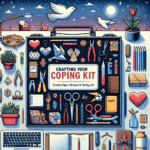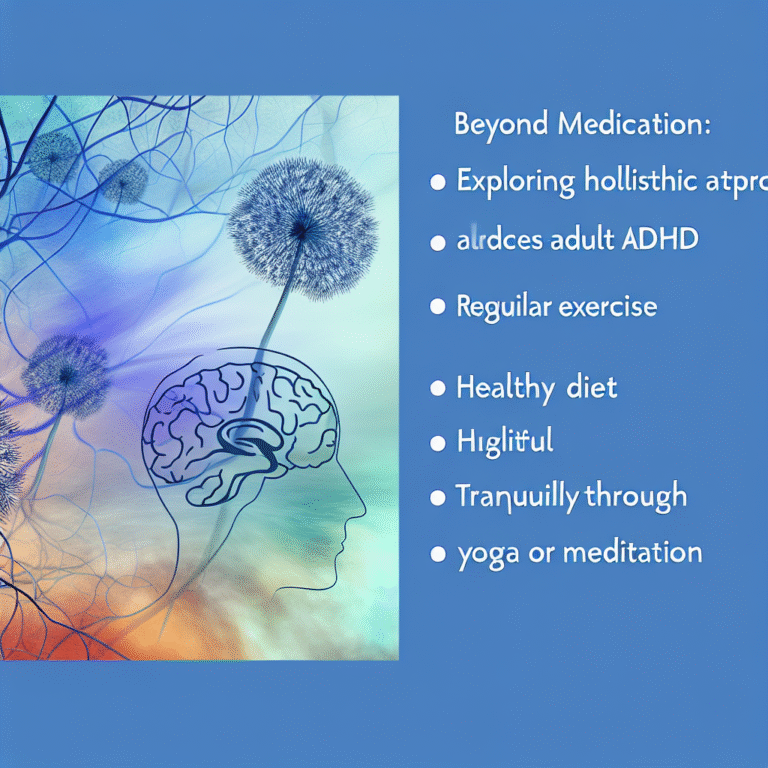
Visualizing Peace: Essential Art Therapy Practices for Anxiety Relief
Introduction
In a world where anxiety increasingly occupies our daily lives, the quest for relief is more urgent than ever. Among the myriad techniques available, art therapy is emerging as a powerful tool for emotional healing and stress relief. Imagine transforming overwhelming feelings into vibrant colors and compelling narratives—a journey that not only allows expression but fosters resilience. Visualizing Peace: Effective Art Therapy Practices for Anxiety Relief isn’t just a concept; it’s a transformative experience that connects the mind and body, often leading to profound healing.
Art therapy helps to unlock emotions that are often difficult to articulate verbally, offering an artistic pathway to self-discovery and emotional release. By engaging in creative activities, anxious individuals can visualize peace, learn to express themselves, and experience significant mental health benefits. The integration of mindfulness within art therapy practices further enhances this soothing journey. In this article, we will explore various effective art therapy practices specifically designed to relieve anxiety, share compelling case studies, and provide actionable insights to encourage you to try these methods for yourself.
The Science Behind Art Therapy and Anxiety Relief
Understanding the psychological mechanisms at play in art therapy is crucial to recognizing its efficacy. Art therapy can facilitate self-exploration and emotional expression, making it easier for individuals to confront anxiety-inducing thoughts. Studies have shown that engaging in creative activities can lead to decreased levels of the stress hormone cortisol, improved emotional regulation, and even neurological changes that positively affect mental health.
Stress and the Brain
When faced with anxiety, our brain activates the amygdala, triggering a fight-or-flight response. This response floods our system with stress hormones, creating a cycle of fear and tension. Art therapy helps disrupt this cycle by engaging different areas of the brain, specifically the prefrontal cortex, responsible for higher-order thinking and emotional regulation. It enables the creation of a safe space where individuals can visualize peace, exploring their emotions through colors, shapes, and narratives.
Art therapy as a Mindfulness Practice
Integrating mindfulness into art therapy practices can magnify benefits. Mindfulness encourages an enhanced state of awareness, allowing individuals to stay present while creating art. By focusing solely on the act of creation, one can often disengage from worries about the past or future, making it an ideal approach for managing anxiety. Visualizing Peace: Effective Art Therapy Practices for Anxiety Relief emphasizes this mindful approach to allow deeper emotional processing.
Effective Art Therapy Practices for Anxiety Relief
1. Expressive Painting
Expressive Painting is a spontaneous art-making process that prioritizes emotion over technique. It encourages individuals to use color and shapes to convey their feelings, creating a visual representation of their emotional state—a fundamental practice in Visualizing Peace: Effective Art Therapy Practices for Anxiety Relief.
How to Engage:
- Set aside a dedicated space for painting.
- Use any materials on hand—acrylics, watercolors, or even crayons.
- Focus on your feelings and select colors that resonate with those emotions.
- Spend 30 minutes painting without judgment.
Case Study: Sarah’s Journey
Sarah, a 28-year-old graphic designer, struggled with anxiety stemming from job pressures. Through expressive painting, she created a series of colorful canvases that reflected her inner turmoil. The vibrant hues and chaotic brushstrokes mirrored her thoughts, but as she persisted, her art evolved towards softer colors and gentle lines, symbolizing her journey towards serenity. Sarah reported feeling more in control and expressed that her anxiety had notably decreased.
2. Guided Imagery and Visualization Arts
Incorporating visualization techniques within art therapy can be incredibly powerful. Guided Imagery and Visualization Arts combine mental imagery with artistic creation to promote relaxation and alleviate anxiety.
How to Engage:
- Close your eyes and visualize a peaceful scene—beach, forest, or garden.
- Spend a few moments in this serene setting, focusing on details like colors, sounds, and smells.
- Open your eyes and recreate this scene on paper, using whatever medium you prefer.
Case Study: Jonathan’s Peaceful Forest
Jonathan, a 32-year-old military veteran, often faced anxiety triggered by traumatic memories. He engaged in guided imagery to visualize a tranquil forest. He then translated this image into a stunning pastel drawing filled with vibrant greens and calming blues. Jonathan reported that this practice helped him feel rooted and connected to nature, significantly easing his anxiety.
3. Collage and Mixed Media
Creating a Collage or using Mixed Media invites exploration and the layering of various elements, helping individuals process complex emotions. This practice aligns perfectly with Visualizing Peace: Effective Art Therapy Practices for Anxiety Relief, emphasizing exploration.
How to Engage:
- Gather magazines, newspapers, fabric scraps, and personal photos.
- Cut images, texts, and textures that resonate with your feelings.
- Assemble them onto a canvas or paper, expressing your inner self.
Case Study: Amelia’s Storyboard
Amelia, a 24-year-old college student, felt overwhelmed with academic pressure. She created a collage reflecting her journey. By adhering images representing challenges alongside elements representing support and hope, Amelia visualized her path. Through this mixed-media art, she expressed anxieties but also acknowledged her resilience. This practice significantly boosted her self-esteem and provided clarity.
4. Adult Coloring
Adult Coloring books have surged in popularity, and for good reason. This therapeutic practice is a straightforward yet powerful way to engage creativity while gaining emotional respite.
How to Engage:
- Choose an intricate coloring book or print designs online.
- Set a calming atmosphere—soft music or nature sounds can enhance the experience.
- Focus on the colors and patterns, letting go of perfectionism.
Case Study: Michael’s Colorful Escape
Michael, a 45-year-old accountant, turned to adult coloring as a way to unwind after stressful workdays. Every evening, he would immerse himself in this calming activity. By focusing on coloring patterns, he reported reduced stress levels and improved focus throughout his day. His transformation serves as a testament to the simplicity of coloring as a legitimate form of visualizing peace.
Tips for Getting Started with Art Therapy
Starting your journey with Visualizing Peace: Effective Art Therapy Practices for Anxiety Relief can be as simple as having the right tools and mindset. Here are a few tips to enhance your experience:
| Tip | Description |
|---|---|
| Set Up a Dedicated Space | Create an inspiring, clutter-free environment for your art activities. |
| Choose Comfort Over Technique | It’s about expression; there’s no right or wrong in art therapy. |
| Engage in Group Sessions | Explore community art therapy for additional support and encouragement. |
| Embrace Imperfection | Allow your art to be a reflection of your feelings, not a masterpiece. |
| Document Your Progress | Keep a journal alongside your art, reflecting on your experiences. |
Conclusion
In navigating anxiety, the quest for Visualizing Peace: Effective Art Therapy Practices for Anxiety Relief opens a new realm of possibilities. By exploring expressive painting, guided imagery, collages, and adult coloring, individuals can unlock trapped emotions and facilitate deeper understanding of their anxiety. Through case studies like Sarah, Jonathan, Amelia, and Michael, we see the real-world impact of these practices—turning emotional turbulence into vibrant narratives.
As you embark on your artistic journey, remember that the act of creation is a powerful vehicle for healing. Embrace this opportunity to visualize peace, and allow art to accompany you on the path to emotional well-being. The journey of healing through art is not just about finding relief from anxiety, but about rediscovering the profound beauty of self-expression.
FAQs
1. What materials do I need to start art therapy?
The beauty of art therapy lies in its accessibility. You can start with basic materials such as paper, colored pencils, markers, or paints. What matters most is your willingness to engage in the creative process.
2. How often should I practice art therapy for it to be effective?
Consistency can enhance the benefits of art therapy; consider engaging in it a few times a week. However, it’s essential to listen to your body and mind. Quality over quantity is key!
3. Can I do art therapy alone, or do I need a therapist?
While guided art therapy with a professional can provide deeper insights, many individuals find great relief through self-guided art practices. Starting alone may be a helpful way to explore your creativity and emotions.
4. What if I feel stuck and unable to create anything?
Feeling "stuck" is a common part of the creative process. If you’re experiencing this, try switching materials, using prompts, or simply doodling without aiming for perfection. Focus on the process rather than the product.
5. Is art therapy suitable for all ages?
Absolutely! Art therapy can be tailored for any age group. Whether it’s children coping with anxiety, adults navigating stress, or seniors dealing with loneliness, art is a universal language of expression.
By integrating these art therapy practices into your routine, you’re taking a proactive step toward managing anxiety and inviting peace into your life. Visualize your journey—the colors, shapes, and feelings—and remember that each stroke of creation helps pave the way to a calmer mind and a more peaceful existence.















